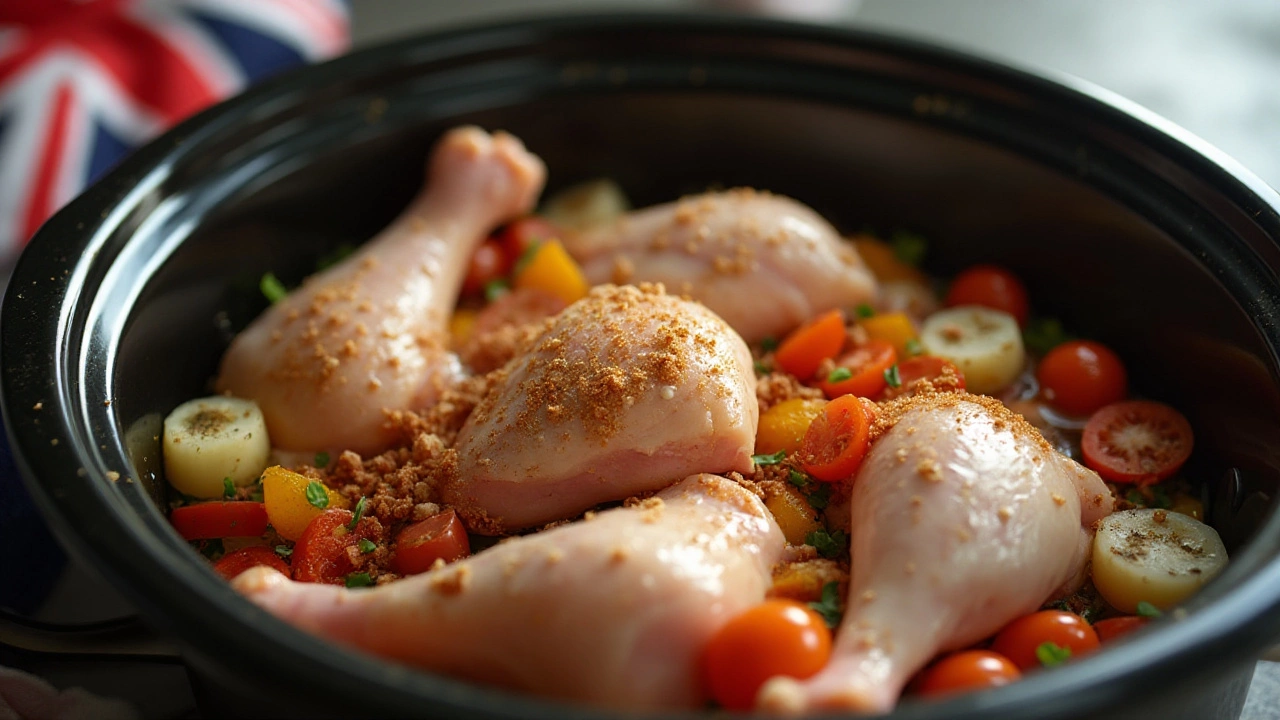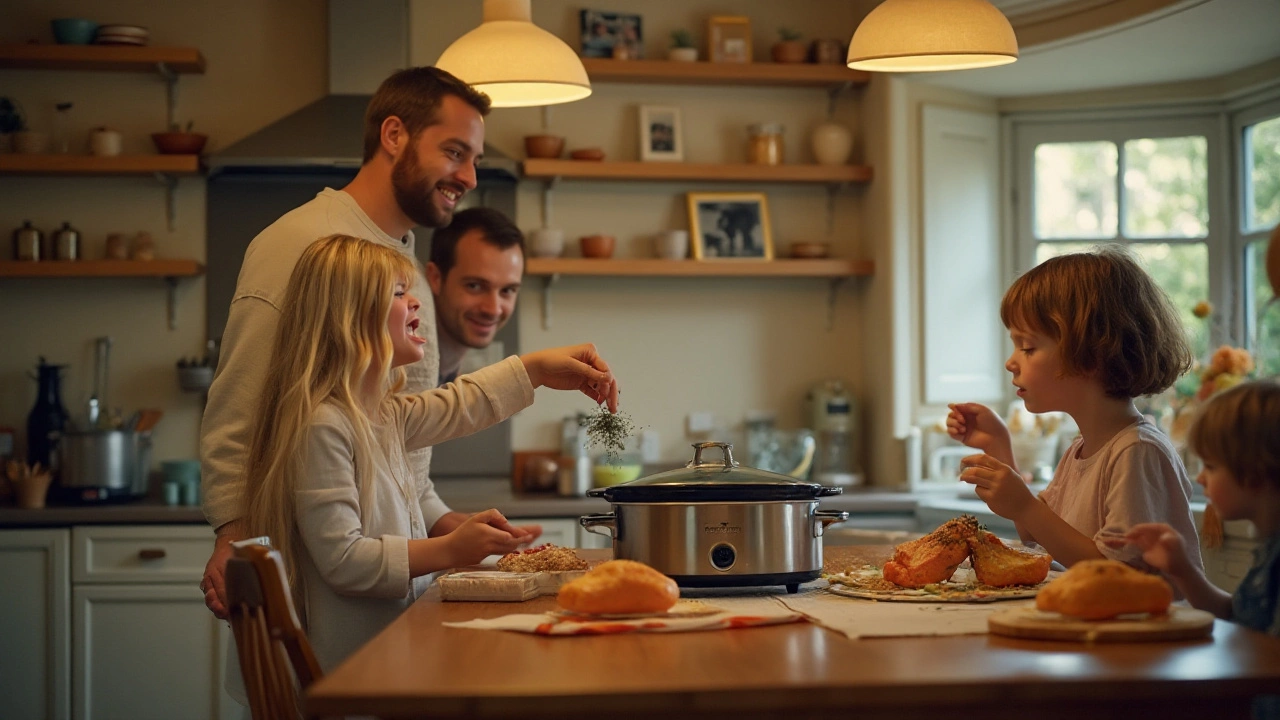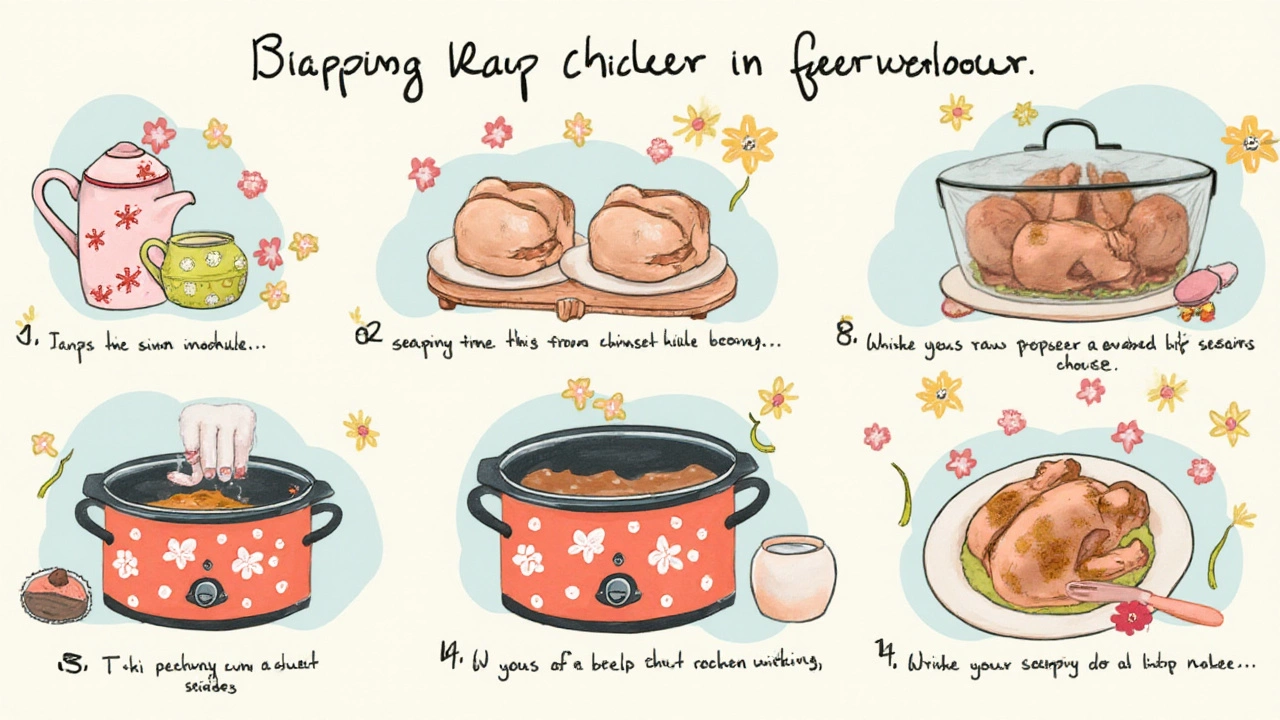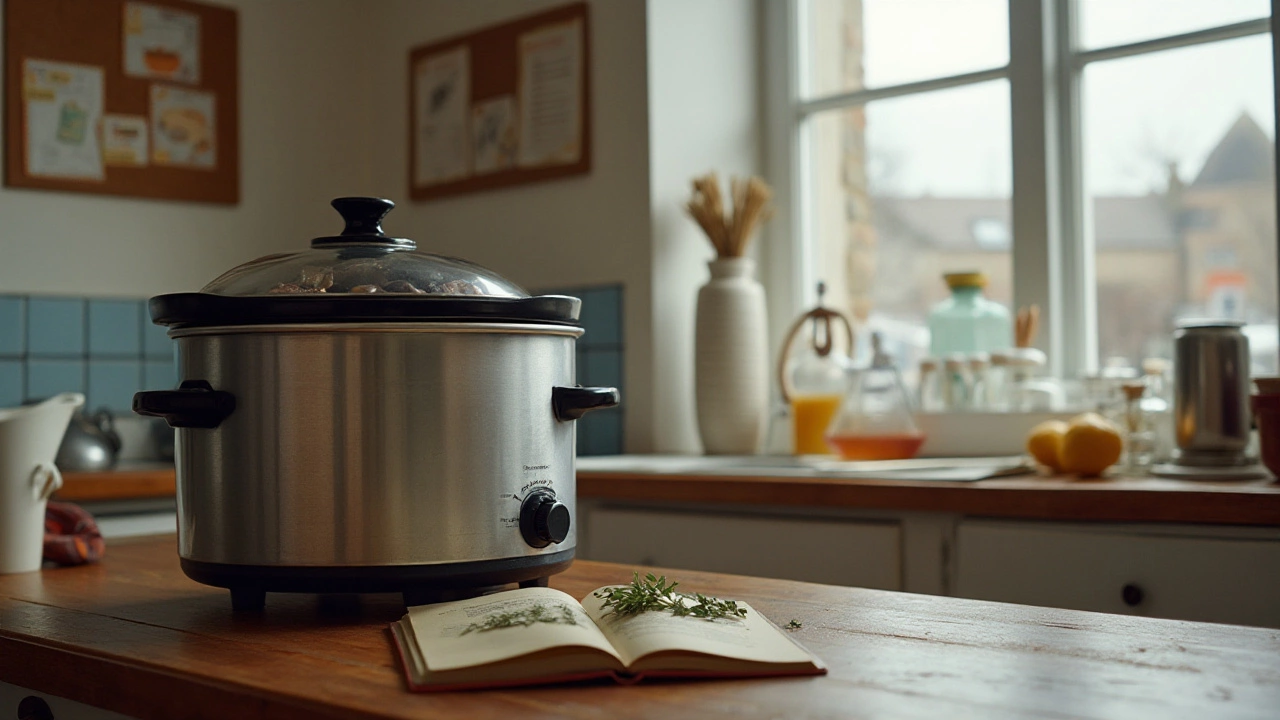Preparing a delicious meal with minimal effort is the magic that a slow cooker brings to your kitchen. One question that often surfaces is whether you can place raw chicken directly into a slow cooker. The answer is yes, and it's a commonly employed method for many home cooks seeking to create succulent and flavorful chicken dishes.
However, cooking raw chicken in a slow cooker is not just about tossing in ingredients and letting them stew. There are important considerations around safety, flavors, and cooking techniques that can help elevate your meal from good to mouth-watering. This article dives into how you can safely put raw chicken in your slow cooker and ensure it turns out perfectly cooked and full of taste.
Safety Considerations
When it comes to cooking raw chicken in a slow cooker, safety should be your top priority. Slow cookers work by cooking food at lower temperatures over extended periods, typically between 170 and 280 degrees Fahrenheit. This method can raise concerns about the meat staying in the food safety danger zone—between 40 and 140 degrees Fahrenheit—for too long, allowing bacteria like Salmonella and Campylobacter to thrive. To counter this, ensure your slow cooker reaches a safe temperature quickly enough—ideally bringing the contents over 140 degrees Fahrenheit within four hours. Using a food thermometer is vital; it's the only reliable way to check if your chicken is cooked through appropriately. Always aim for an internal temperature of 165 degrees Fahrenheit.
The USDA confirms that slow cookers are a safe option, provided instructions are followed. One common safety tip is to thaw chicken thoroughly before adding it to the slow cooker. Placing frozen chicken directly into the cooker risks keeping it at unsafe temperatures for too long. Another practice is to layer vegetables at the bottom and place the chicken on top. Vegetables take longer to heat and cook, so positioning them this way allows for better heat distribution and ensures the entire dish maintains safe temperatures. Always heat the cooker first by turning it on and allowing it to warm up.
According to the USDA, "Slow cookers are a safe process of cooking food if directions are followed properly." It's wise advice to heed, ensuring meals are not only tasty but free from unexpected risks.For some added safety, choosing recipes with an adequate amount of liquid is beneficial. The liquid in the cooker helps conduct heat more effectively throughout the slow cooker, promoting even cooking. Regularly check that your slow cooker lid fits snugly and avoid lifting it unnecessarily during cooking, as each lift releases heat and increases cooking time. If you're in doubt whether the cooker is heating adequately, utilize a kitchen towel to wrap the lid; this minimizes heat loss significantly. Following these steps ensures your meals are cooked safely and stay delicious.

Flavor Development
The journey to mouth-watering chicken dishes in a slow cooker starts with understanding how to enhance the flavors. While you can indeed place raw chicken directly into your slow cooker, achieving a burst of flavor requires a bit more finesse. Slow cooking has the unique ability to extract and meld flavors over time, which is why it's a favorite for many home chefs. Adding a robust array of spices and aromatics at the start can set the stage for delightful results. Consider using garlic, onions, or fresh herbs like thyme and rosemary to infuse your chicken with depth and character. These ingredients slowly release their essence into the broth, wrapping each bite of chicken with rich, harmonious flavors.
To further enhance the taste, searing the chicken before placing it into the slow cooker can make a remarkable difference. This process, known as Maillard browning, creates a caramelized exterior that traps in juices and adds a layer of savory complexity absent in undercooked chicken. It might mean an extra step, but the payoff in the flavor department is well worth it. While some purists may swear by adding seared chicken alone, many slow cooker enthusiasts combine this with a splash of acid, such as lemon juice or a dash of vinegar. The acid helps break down the proteins, tenderizing the meat and elevating its flavor profile.
Your choice of liquid can also significantly impact the result. Some use broth, whether chicken or vegetable, to add another dimension to the dish. Meanwhile, others might choose wine for its nuanced aroma and taste. The liquid not only helps cook the chicken to tender perfection but also soaks up the seasoning, turning into a delectable sauce. An often-overlooked technique is the addition of sweet elements, such as a spoonful of honey or a few dried fruits. When mixed with spices, this creates a balance that teeters between savory and sweet, tantalizing taste buds with each bite.
With these techniques at hand, you can transform the most basic raw chicken into a gourmet delight. According to Julia Child, “The only real stumbling block is fear of failure. In cooking, you’ve got to have a what-the-hell attitude.”
It's this spirit of exploration that can lead you to flavor triumphs in your slow cooking adventures.Above all, patience and willingness to experiment are your best allies in the quest for flavor mastery. Whether you're a seasoned cook or a novice, tapping into these flavor-enhancing strategies will ensure your dish leaves a lasting impression at the dinner table.

Methods of Cooking
Cooking raw chicken in a slow cooker presents a uniquely forgiving way to prepare meals, where time becomes your ally for developing deep flavors. Understanding the methods available can expand the capabilities of this humble appliance in your kitchen. The slow cooker works by maintaining a low, steady temperature over an extended period, making it ideal for tougher cuts of meat and proteins like chicken, especially when they're raw. The moist environment ensures that the chicken doesn't dry out, while the prolonged cooking time allows all ingredients to meld harmoniously, transforming raw components into a robust dish. Often, cooks are divided about whether to brown the chicken beforehand. While it's not mandatory, those seeking an added depth of flavor might choose this optional step. Searing the chicken before placing it in the cooker can caramelize the exterior, introducing a wealth of flavor through the Maillard reaction.
Browning or Not Browning
Choosing whether or not to brown your chicken before placing it in the slow cooker can significantly alter the final taste and texture of your meal. This preliminary step, though not essential, can enhance the color and taste, creating a richer, more complex flavor profile. When you brown chicken, the heat breaks down the sugars and proteins on its surface, resulting in the Maillard reaction, which adds a subtle yet complex flavor. This step can take as little as ten minutes and has the potential to transform your dishes. Many chefs recommend it for those who want to go the extra mile. However, if time is of the essence or you're aiming for a simpler, less intense taste, cooking directly from raw is perfectly viable. In fact, the gentle cooking process of a slow cooker ensures that even raw chicken will come out tender and safe to eat, as the consistent heat will slowly bring the chicken to a safe internal temperature of 75°C (165°F).
Layering Ingredients
The method of layering the ingredients inside the slow cooker also has implications for how well the flavors are distributed in the final dish. Experienced cooks often recommend placing root vegetables at the bottom of the cooker, as they require more time to reach tenderness. The raw chicken can then be placed on top, ensuring the juices coat and season the vegetables beneath. This not only adds flavor to the vegetables but also prevents the chicken from becoming waterlogged, which can happen if it's submerged for too long. Additionally, arranging ingredients in this manner ensures that those requiring the most time to cook receive the most heat. It's a simple yet effective strategy that can enhance the synergy of flavors in your slow cooker meal. Using different broths, wines, or sauces as the liquid foundation adds further complexity without extra effort.
"A slow cooker does not only simplify cooking but also emphasizes the joy of creating flavorsome dishes with basic ingredients," stated culinary expert James Peterson.
Cooking Times and Temperatures
Understanding the temperature settings is crucial in making sure your chicken cooks thoroughly and safely. Typically, slow cookers offer at least two heat settings, low and high, sometimes featuring a 'keep warm' option as well. Cooking on low is a great method for those dishes that benefit from extended cooking times, making it ideal when cooking a whole chicken or larger pieces. This allows collagen in the meat to break down, yielding a juicy and tender result. When using a high setting, cooking times are halved, making it suitable for smaller pieces or when time is tight. However, maintaining the low setting preserves more moisture, crucial when using raw chicken, which can dry out more easily in a faster cooking environment. Always ensure that the chicken's internal temperature reaches a minimum of 75°C (165°F) to confirm that it is cooked safely.
| Setting | Cooking Time for Chicken |
|---|---|
| Low | 6-8 Hours |
| High | 3-4 Hours |
These techniques form the basis of slow cooking with raw chicken, a practice that, when done correctly, not only ensures the safety of your meal but also enhances the flavors inherent in simple, wholesome ingredients. It's about allowing the slow cooker to do what it does best - transforming raw ingredients into something unexpectedly delightful.

Tips and Tricks
When you decide to cook raw chicken in a slow cooker, knowing some handy tips and tricks can make all the difference in the world. Understanding the nuances of timing, seasoning, and layering will not only ensure safety but also enhance the flavor profile of your dish. A slow cooker meal can be as rich and savory as one prepared in a gourmet kitchen, so long as you pay attention to the details. Let's explore how to get the most out of your slow cooking experience.
One fundamental tip is marinating your chicken before placing it in the slow cooker. Marinating for at least a few hours, or even overnight, can infuse the chicken with a depth of flavor while also enhancing its tenderness. This step can turn a simple chicken dish into a truly memorable meal. Make sure your marinades incorporate a mix of acid, fat, and seasonings; think along the lines of lemon juice, olive oil, and a dash of your favorite spices. This combination not only enhances flavor but also aids in breaking down the meat fibers, resulting in a juicy and flavorful result. Marinating is the secret weapon of many chefs and could be the key to your new favorite recipe.
Layering ingredients in your slow cooker is another vital trick. Start by placing vegetables at the bottom, as they take longer to cook compared to raw chicken. Placing your veggies at the base allows them to absorb the juices and flavors from the meat above, creating a natural stock that doubles as your sauce. Consider this: by slow-cooking carrots, potatoes, and onions beneath your chicken, you create an intertwined flavor that melds beautifully over several hours. This process not only enhances taste but also ensures even cooking without leaving some ingredients underdone. So, remember, when using a slow cooker, it’s all about the clever placement of ingredients.
Monitoring your cooking time is also key. A common slow cooker query is whether one can overcook chicken. While achieving that fall-off-the-bone quality is desirable, overcooked chicken can dry out and lose flavor. Depending on your cooker, and the size of your chicken pieces, aim for four to six hours on low heat. If you're unsure, use a thermometer to check the internal temperature; it should reach at least 165°F to be safe for consumption. Monitoring time ensures your chicken is tender, moist, and perfectly cooked without losing its natural juices.
Safety, of course, is paramount. When preparing dishes with raw meat, cleanliness is key. Use separate boards and knives when preparing raw chicken. Always ensure your slow cooker reaches a steady temperature to prevent bacterial growth. An interesting point by the USDA notes, "Bacteria grow most rapidly in the range of temperatures between 40 °F and 140 °F." So maintaining heat is crucial from the start.
"A clean kitchen is the foundation of good cooking," says renowned chef Julia Child, highlighting the importance of hygiene in cooking.
Finally, adding some finishing touches before serving can make your dish incredible. Infuse freshness into your meal with herbs such as parsley or cilantro, adding a fresh crunch. A squirt of lemon or a splash of cream can transform the sauce, bringing it all together with a vibrant finish. These small additions elevate your meal into a complete dining experience, all achieved with the gentle magic of your trusted slow cooker.

